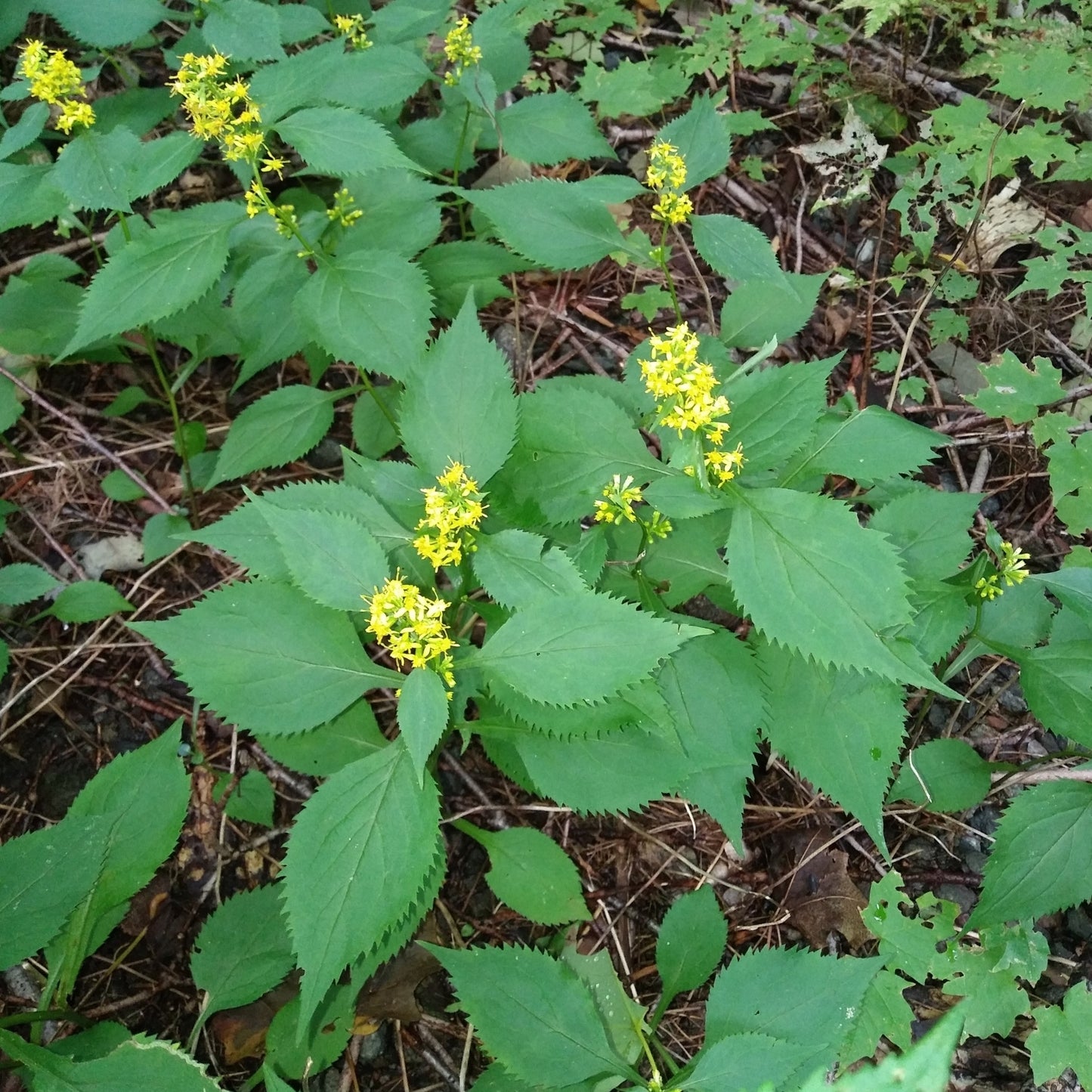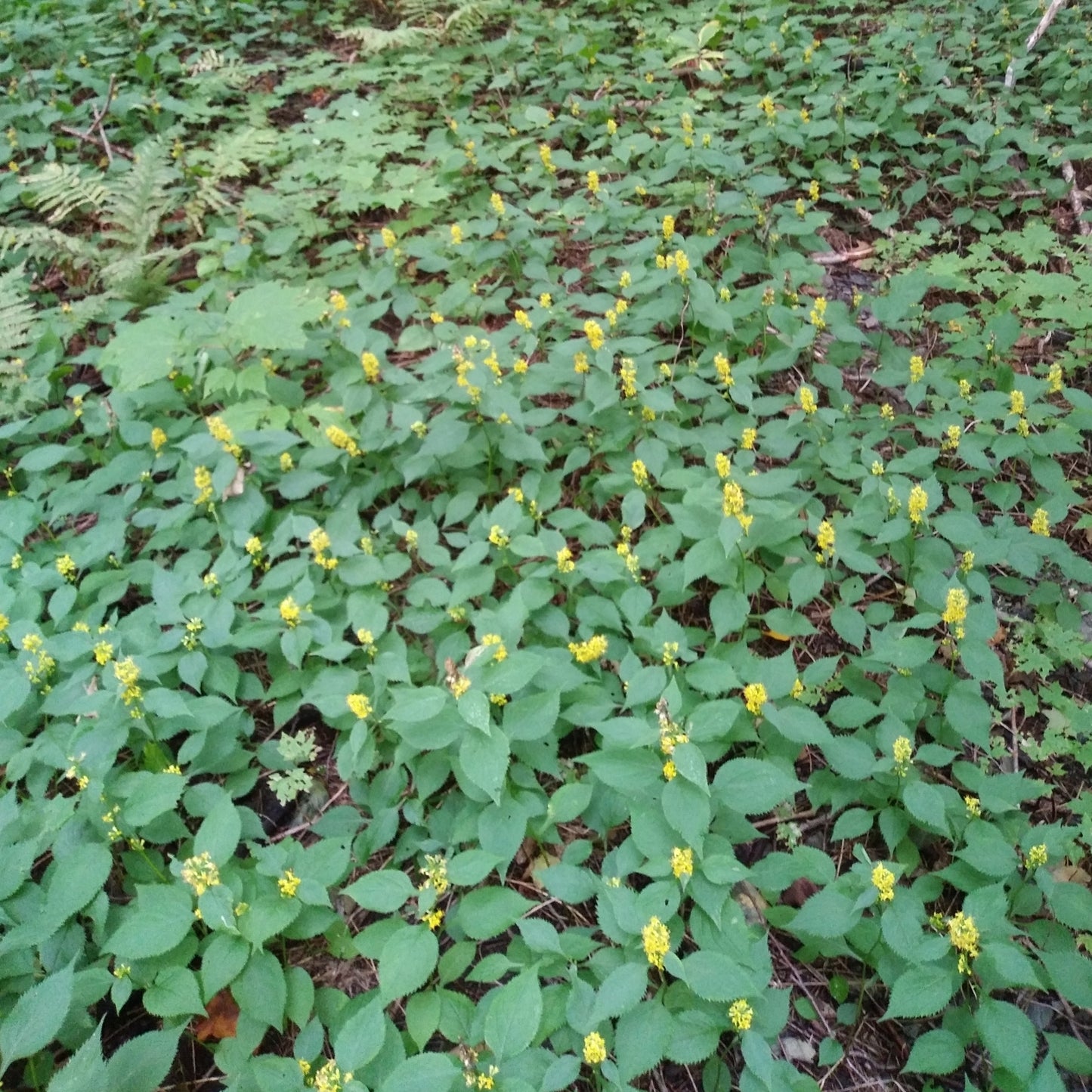Zigzag goldenrod
Solidago flexicaulis
Solidago flexicaulis
Couldn't load pickup availability
Sun/shade: Full sun to full shade
Soil moisture: Medium
Height: 2-3'
Flowering period: September
Deer resistance: Medium
Zigzag goldenrod’s bright yellow blooms cluster at the base of its serrated leaves like mounds of shining riches. At the top of the plant, the blooms proliferate into a splendid crown. Numerous insects are drawn to the floral wealth, and many moth and butterfly caterpillars consume the plant’s foliage.
Native to NE Ohio moist and mesic forests, zigzag goldenrod has outstanding shade tolerance. The plant is known to form extensive colonies through spreading rhizomes, and with its handsome form, it is well suited to be a cornerstone plant of the shade garden. Other woodland wildflowers that also display a colony-forming habit include white wood aster, foamflower, and jumpseed.
Among the common bee visitors to zigzag goldenrod are the small sweat bees of the genus Lasioglossum. Possessing fairly short tongues, the small sweat bees can easily access the nectar in zigzag goldenrod’s shallow flowers, and they rely on these and other late-blooming flowers in order to build their energy stores prior to hibernation.
Photos © Mike Zifkin, CC BY 4.0.



